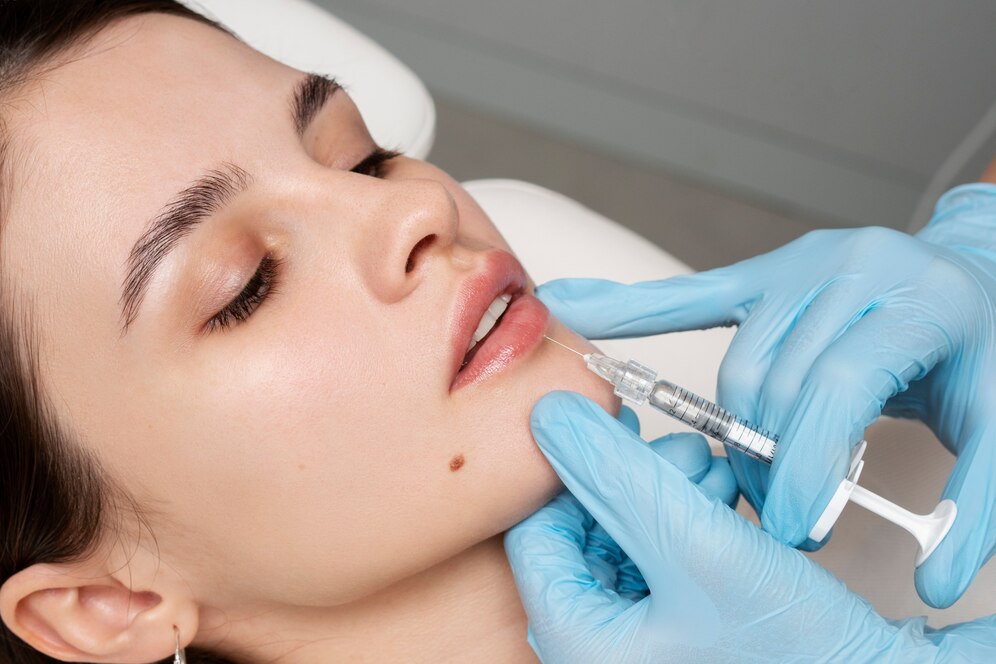A youthful face owes much of its structure and harmony to well-contoured cheeks. As the skin ages, there’s a noticeable decline in collagen and elastin production, leading to volume loss, flattening, and sagging in the mid-face. Cheek fillers, using advanced dermal fillers service, have emerged as one of the most refined aesthetic treatments for restoring lost volume and enhancing facial contour without surgery.

This non-invasive option allows practitioners to sculpt the cheek area with remarkable precision, achieving a lifted, more defined look. With increasing demand among professionals and clients for subtle rejuvenation, cheek fillers have become a staple in modern aesthetic practice.
The Role of Cheeks in Facial Aesthetics
Cheeks play a pivotal role in facial proportions. They create the visual balance between the forehead, jawline, and chin. High, full cheeks are often associated with vitality and symmetry. When mid-face volume diminishes with age, it leads to a tired or gaunt appearance, often pulling the entire facial aesthetic downward.
Structural support provided by the cheek fat pads diminishes over time, and bone resorption further alters the facial contour. Cheek fillers not only restore the plumpness of the area but also improve skin tautness and overall facial harmony.
How Cheek Fillers Work?
Cheek fillers use hyaluronic acid-based injectables or other volumizing agents that mimic substances naturally found in the body. These fillers are injected into specific anatomical layers of the cheek – the deep fat compartments, subcutaneous tissue, or superficial dermis – depending on the correction required.
The goal is not to merely inflate the cheek but to strategically lift and reshape it in alignment with the patient’s natural facial structure. When done skillfully, the result is subtle, rejuvenating, and almost imperceptibly artificial – just as nature intended.
Ideal Candidates for Cheek Fillers
Practitioners look for several indications when considering cheek augmentation:
- Noticeable volume loss in the mid-face
- Flattening of the cheekbones
- Sagging or jowling along the jawline
- Deepening nasolabial folds due to loss of mid-face support
- Patients seeking enhanced definition without surgery
While age-related changes are a common reason for treatment, younger individuals often seek fillers to enhance cheek projection and define facial angles.
Types of Fillers Used for Cheeks
Injectables used for cheek augmentation differ in viscosity, longevity, and lifting capacity. Each has unique rheological properties suited to different depths and aesthetic goals.
Hyaluronic Acid Fillers
Hyaluronic acid (HA) is the most commonly used material due to its biocompatibility and reversibility. Brands offer fillers with varying cross-linking technologies to ensure appropriate firmness for the cheek area.
Calcium Hydroxylapatite
This semi-permanent filler stimulates collagen production and provides structure. It’s often used in patients looking for longer-lasting results and greater lift.
Poly-L-lactic Acid
A collagen stimulator rather than a traditional filler, this compound gradually thickens the skin by stimulating fibroblasts, improving mid-face fullness over time.
Technique and Placement
The artistry in cheek augmentation lies in understanding facial anatomy, vector lifting, and symmetry. The choice of cannula vs. needle, depth of injection, and injection plane are determined by the practitioner’s approach and the patient’s anatomy.
For volume restoration, deep fat compartments like the lateral and medial SOOF (suborbicularis oculi fat) and deep medial cheek fat are commonly targeted. For contouring, more superficial injections may be performed along the zygomatic arch to create light reflection and facial lift.
Precise placement can enhance:
- Anterior cheek projection
- Lateral contouring
- Smoothing of mid-face hollows
- Better definition of the tear trough–cheek transition
Safety Considerations
Safety remains paramount in aesthetic medicine. Cheek fillers are considered safe when administered by qualified professionals with extensive anatomical knowledge. However, risks do exist:
- Bruising and swelling
- Asymmetry or overcorrection
- Vascular occlusion, though rare, is a critical risk requiring immediate intervention
Using aspiration techniques, ultrasound-guided injections, and conservative dosing helps mitigate these risks significantly.
Duration of Results
Longevity varies by filler type, metabolism, and lifestyle. On average:
- Hyaluronic acid fillers: 9–18 months
- Calcium hydroxylapatite: up to 18 months
- Poly-L-lactic acid: 24+ months (with gradual build-up)
Touch-ups or layering treatments may be recommended to maintain optimal results and adapt to facial changes over time.
The Art of Subtle Enhancement
One of the major appeals of cheek fillers lies in their ability to deliver noticeable yet natural improvements. The idea isn’t to create exaggerated contours but to refresh and elevate the natural architecture of the face.
Experienced injectors analyze how light interacts with facial features. The right amount of filler in the right place can restore youthful convexity, improve facial proportion, and indirectly enhance the eyes, lips, and lower face.
Cheek Fillers for Male and Female Patients
Men and women often seek different outcomes. Male cheek enhancement typically focuses on angular definition, flatter contours, and stronger cheekbone lines. In contrast, women may desire higher, rounder cheeks that project softly and create a youthful curve.
An individualized approach, respecting gender differences in facial structure and aesthetic preferences, is crucial to delivering satisfying results.
Combining Cheek Fillers with Other Treatments
Cheek augmentation is frequently part of a larger rejuvenation plan. Its effects can be amplified when combined with:
- Tear trough fillers to reduce under-eye hollowness
- Nasolabial fold fillers to soften laugh lines
- Jawline contouring for a more sculpted look
- Skin tightening treatments for additional lift
Cheek fillers provide foundational support that enhances the efficacy and aesthetic of these complementary procedures.
Client Expectations and Consultations
Effective consultations set the stage for successful outcomes. Clients should be educated about what cheek fillers can and cannot achieve. Realistic expectations, supported by visual references and 3D imaging, can guide the treatment plan.
Aesthetic goals, personal preferences, medical history, and facial structure all influence the product choice and treatment strategy.
Psychological Impact of Mid-Face Rejuvenation
Beyond physical improvement, cheek fillers often restore confidence. Patients report looking less tired, more vibrant, and even more approachable. The mid-face has a profound effect on overall facial expression, and subtle enhancements here can dramatically shift self-perception and social interactions.
Myths Around Cheek Fillers
Several misconceptions surround cheek fillers:
- They make the face look puffy: Not when done correctly. Modern fillers and techniques aim for lift and shape, not bulk.
- They freeze expressions: Cheek fillers do not affect muscle movement, unlike neurotoxins.
- They’re permanent: Most cheek fillers are temporary and metabolized over time.
- Everyone will notice: The best results look so natural that friends may notice a refreshed look, not a specific procedure.
Educating clients helps reduce anxiety and builds trust.
Post-Treatment Care
Aftercare plays a vital role in recovery and result longevity. Clients are usually advised to:
- Avoid touching the area for 6–12 hours
- Sleep on their back to avoid pressure
- Limit exercise, alcohol, and heat exposure for 24–48 hours
- Follow up if any concerns arise
Mild swelling or bruising may occur but typically subsides within a few days.
Trends Shaping the Future of Cheek Fillers
Advancements in product formulation, cannula technology, and facial assessment tools are elevating the quality of cheek augmentation. Personalization is becoming more sophisticated, with AI-assisted facial scans and bespoke filler layering becoming standard in high-end practices.
Preventative aesthetic treatments are also gaining traction. Younger clients seek prejuvenation—strategic enhancements that delay the signs of aging rather than reversing them later.
Why Choose Refresh?
At Refresh, our philosophy centers on elevating natural beauty with precision, subtlety, and care. Every treatment begins with a tailored consultation that respects your individuality, facial anatomy, and long-term goals. Our aesthetic professionals combine technical expertise with a deep understanding of facial harmony to create results that look authentic and empowering.
Our commitment extends beyond the injection – we’re dedicated to your comfort, education, and confidence throughout your journey. At Refresh, sculpted cheeks are just the beginning of a rejuvenated, confident you.


